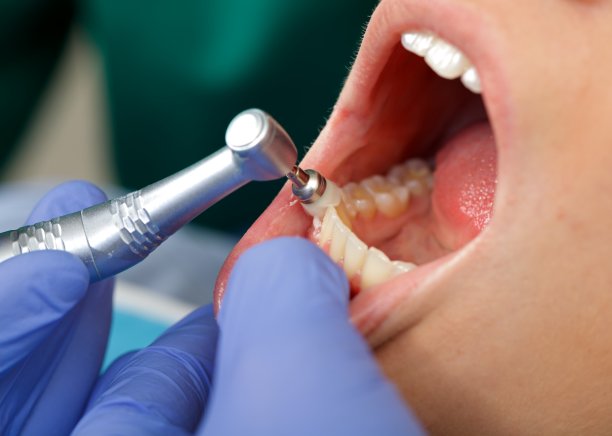The Essential Steps and Considerations for Successfully Extracting a Tooth at the Dentist’s Office
Summary: Extracting a tooth is a common dental procedure that requires careful consideration and methodical steps to ensure the safety and comfort of the patient. This article delves into the essential steps and factors involved in a successful tooth extraction, covering patient assessment, preparation, the extraction process itself, and postoperative care. Each section provides a clear understanding of what to expect at the dentists office, emphasizing the importance of communication between patients and dental professionals. From the initial consultation to the follow-up care, knowledge of these aspects will equip patients with the information they need to navigate this procedure effectively and with confidence.
1. Patient Assessment and Consultation

The first essential step in tooth extraction is the thorough assessment of the patients dental and medical history. During this initial consultation, the dentist evaluates the tooths condition and determines if extraction is indeed necessary. Factors such as decay, infection, or crowding might prompt this decision, and it is vital that the dentist communicates openly with the patient about the reasons for extraction.
Another critical aspect of patient assessment involves taking X-rays to visualize the tooths root structure and orientation relative to the surrounding teeth and structures. This imaging helps in developing an appropriate extraction plan tailored to the individual patients needs. Understanding the patients dental history, including any previous surgeries or allergies, is essential for formulating a safe and effective treatment approach.
Furthermore, the dentist will discuss medication and health status during this phase. Any underlying conditions, such as bleeding disorders or heart conditions, must be taken into account as they could influence the extraction process. Clear communication and full disclosure of medical information are crucial to ensuring the patients safety.
2. Preparing for the Extraction Procedure
Once the assessment is complete, the next step involves preparing for the extraction. This stage includes discussing anesthetic options, which are pivotal in ensuring patient comfort during the procedure. Dentists usually offer local anesthesia to numb the area around the tooth being extracted, but in some cases, sedation options may be available for patients who are particularly anxious.
In addition to anesthesia, patients may receive preoperative instructions that could include fasting, especially if sedation is planned. Patients must be informed about what to expect before, during, and after the procedure, allowing them to mentally and physically prepare for the extraction. This preparation is vital for alleviating any anxiety and ensuring cooperation during the procedure.
Another aspect to consider is the arrangement of post-extraction care. Patients should discuss with their dentist how to manage pain and swelling after the procedure, including what medications might be prescribed and how to care for the extraction site. This proactive preparation fosters a better healing experience.
3. The Tooth Extraction Procedure Itself
The actual tooth extraction process begins once the patient is comfortably positioned and the anesthesia has taken effect. The dentist will use specialized tools to loosen the tooth gradually before removing it from the socket. It is essential that patients remain still during this phase, as it helps facilitate a smoother extraction process.
In cases where the tooth is impacted—meaning it is not fully erupted or is wedged against neighboring teeth—more advanced techniques may need to be employed. The dentist might need to remove surrounding bone or cut the tooth into smaller pieces to ensure a complete extraction. This step underscores the importance of the dentists skill and experience in handling complex cases.
Throughout the procedure, the dentist will monitor the patient’s comfort level and make any necessary adjustments. This ongoing communication reassures the patient and allows them to feel more engaged in the process. Once the extraction is finished, the dentist will provide post-operative instructions to ensure a smooth recovery.
4. Postoperative Care and Recovery
Immediately following the extraction, the dentist will place gauze over the extraction site to manage bleeding, which typically subsides within a few hours. Patients are encouraged to bite down gently on the gauze to promote clot formation. Its crucial to avoid activities that could dislodge the clot, such as sucking or spitting.
Postoperative care also includes managing pain and swelling. Dentists often recommend over-the-counter pain relievers or may prescribe stronger medications if necessary. Ice packs can be applied to the face near the extraction site to alleviate swelling during the first 24 hours.
Patients are advised to follow specific dietary recommendations, including sticking to soft foods and staying hydrated while avoiding hot or spicy foods until the extraction site begins to heal. A follow-up appointment may be scheduled to monitor healing and address any complications that may arise, emphasizing that open communication with the dentist is critical during this recovery phase.
Summary:
In summary, tooth extractions involve a comprehensive process that begins with patient assessment, followed by thorough preparation and the extraction itself, culminating in proper postoperative care. Understanding these steps allows patients to feel informed and confident as they approach a dental procedure that many find daunting.
This article is compiled by Vickong Dental and the content is for reference only.



